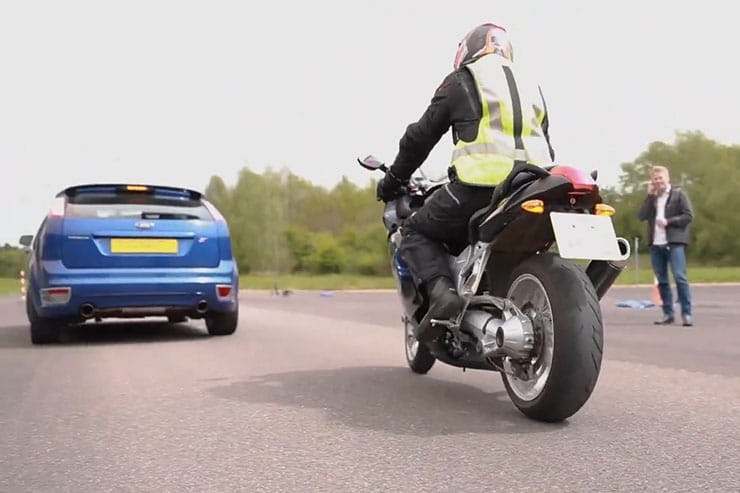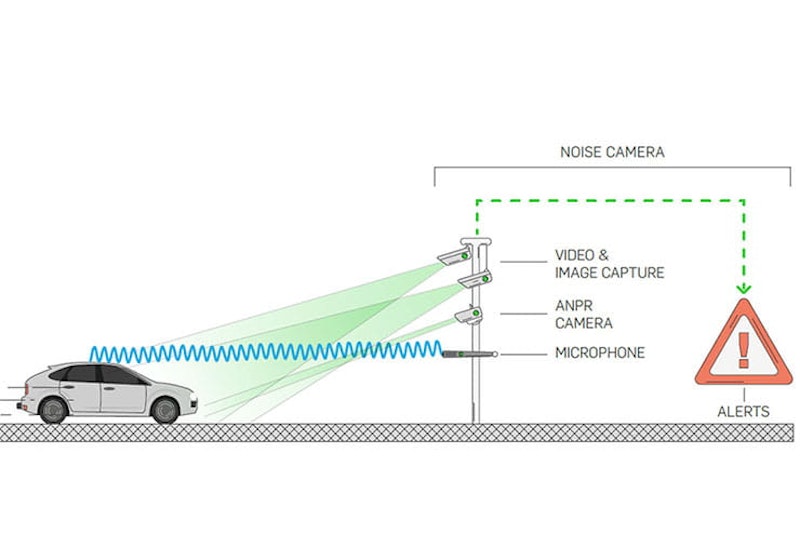Money: the real justification for noise cameras?
By Ben Purvis
Motorcycle Journalist
18.03.2024
The Government’s Plan for Drivers – published last December – included the proposal to ‘allow local councils to roll out noise cameras to target unacceptable vehicle modifications.’ Now results of trial systems have been revealed including calculations that show how profitable they can be.
Three long reports, totalling nearly 200 pages, were commissioned on the trials and they contain several interesting findings including that loud cars are subjectively more disturbing than bikes, as well as illustrations of how much money individual cameras might be expected to make in fines.
All three reports can be found here, if you’re looking for an insomnia cure. They include investigations into setting an appropriate threshold noise level to trigger noise cameras, the differences across a variety of cars and bikes, particularly with aftermarket exhausts, results from test sites where noise cameras have been trialled and cost/benefit calculations showing how much profit or loss cameras might make on different types of road.
The first stand-out finding was that in subjective tests comparing a BMW K1200S with a slip-on silencer and removable internal baffle against a Ford Focus ST 2.5 with a de-cat exhaust and ‘pops and bangs’ engine tune, across a variety of scenarios, the average scores for the bike were never in the ‘excessively noisy’ category. In contrast, the car was considered excessively noisy in three of the tests. It was also found that people considered the bike to be ‘loud but not disturbing’ at 90dB, compared to 86dB for the car, and ‘normal for that type of vehicle’ up to 82dB against 74dB for the car.
That’s not necessarily good news for bikes, though, as if a blanket threshold is chosen for cars and bikes, it means bikes that would subjectively be considered acceptably noisy might overstep the decibel limit.
The tests also demonstrated how small the percentage of noisy vehicles really is. Across four test sites – in Keighley, Bristol, Great Yarmouth and Rubery – an average of 18,125 vehicles passed the noise cameras each day. The trials ranged from 14 days to 49 days, and across all four cameras there were only 99 activations caused by motorcycles, of which just 26 were ‘excessively noisy’.
Cars, meanwhile, triggered the cameras 1364 times, but only 50 were ‘excessively noisy’.
You might think that such small numbers would make noise cameras an expensive folly, but financial calculations provided in the reports show that they could still be cash cows in certain circumstances.
Calculations in the report show that local major road networks are the most profitable targets. Based on 1 in 3400 vehicles triggering the cameras (0.03% of vehicles) and a traffic flow of 13,700 vehicles per day, there would be four offense each day. Even when allowances are made for ‘lost violations due to high threshold’ (cutting 56% off the total), assuming that 25% of violators don’t pay their fines and that 10% are untraceable, the calculations show that with a £100 fine per offence a camera could raise £53,509 per year, and even after operating expenses that would result in a profit of £10,825. Raise the fine to £150 and the same camera would raise £97,289 for an overall profit of £30,480 after running costs each year.
On more minor roads with less traffic flow and a lower offence rate of 1 in 6700 (0.015%) it’s a different story, with the noise cameras making a five-figure loss even when the highest £150 fine level was chosen.
However, by locating the cameras on roads that have a particular problem with noisy vehicles, the income could rise significantly. In that scenario, the report says that even with ‘medium’ fines of £100, and a £45 processing cost per offence, cameras could expect to have an annual ‘surplus’ (i.e. a profit) of £16,600 to £49,600 depending on road type.
This issue will be particularly thorny if, as was historically the case, if the income from noise cameras was ringfenced (hypothecated) for the authorities operating them rather than going to central coffers.
If you’d like to chat about this article or anything else biking related, join us and thousands of other riders at the Bennetts BikeSocial Facebook page.
Share on social media:

